First season 1891 Seating capacity 2,200 Mascot Duquesne | Athletic director Dave Harper Field surface Sportexe Momentum Turf Division Division I (NCAA) League Division I (NCAA) | |
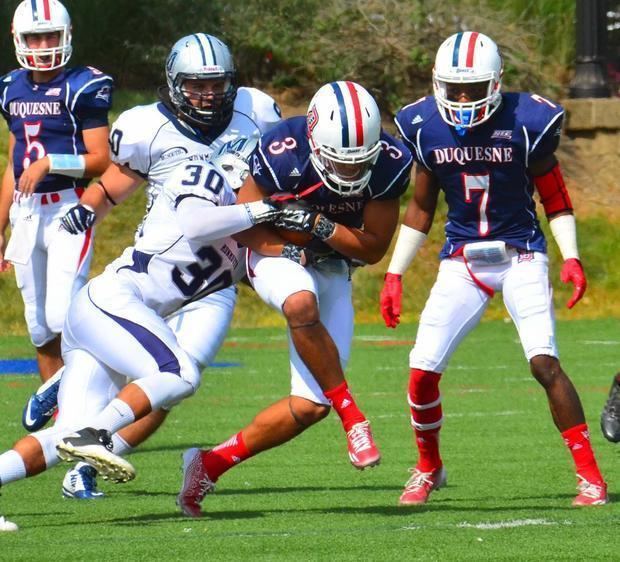 | ||
Conference Northeast Football Conference Rivals Robert Morris Colonials football, Canisius Golden Griffins football | ||
Duquesne dukes football 2011 highlights
The Duquesne Dukes football program is the intercollegiate American football team for Duquesne University located in the U.S. state of Pennsylvania. The team competes in the NCAA Division I Football Championship Subdivision (FCS) and is a member of the Northeast Conference.
Contents
- Duquesne dukes football 2011 highlights
- History
- Major bowl games
- AP Poll appearances
- Innovations
- Notable former players
- Year by year results
- References
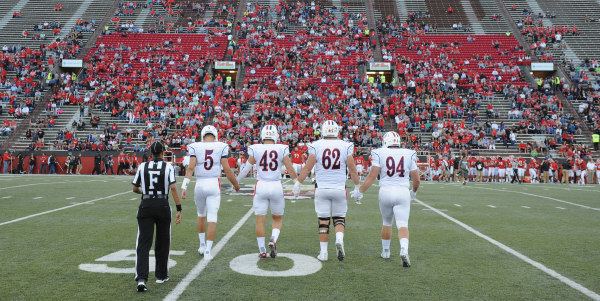
Duquesne has played football as a club team from 1891–1894, 1896–1903, 1913–1914, and 1920–1928, in the NCAA Division I Football Bowl Subdivision (FBS) from 1929–1942 and 1947–1950, again as a club team from 1969–1978, in NCAA Division III from 1979–1992 and in the NCAA Division I FCS from 1993–present.
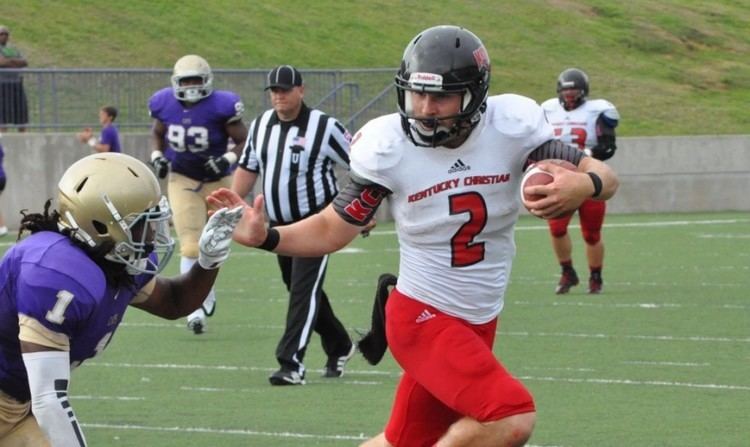
The Dukes have won or shared 15 conference championships in the past 22 years.
The team plays its home games at the 2,200-seat Arthur J. Rooney Athletic Field in Pittsburgh, Pennsylvania. The Dukes are coached by Jerry Schmitt.
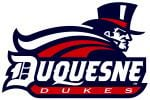
History
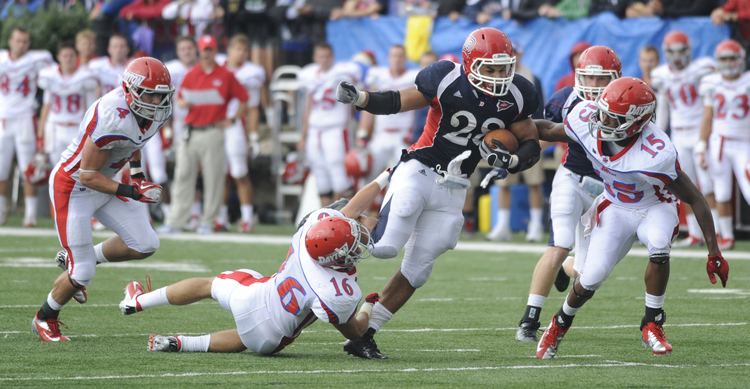
The Dukes started play in 1891 and have had a continuous program since 1969. They were Northeast Conference co-champions in 2011 and 2013 and undisputed champions in 2015. Previously, Duquesne football was a member of the Metro Atlantic Athletic Conference, winning or sharing 11 conference titles.
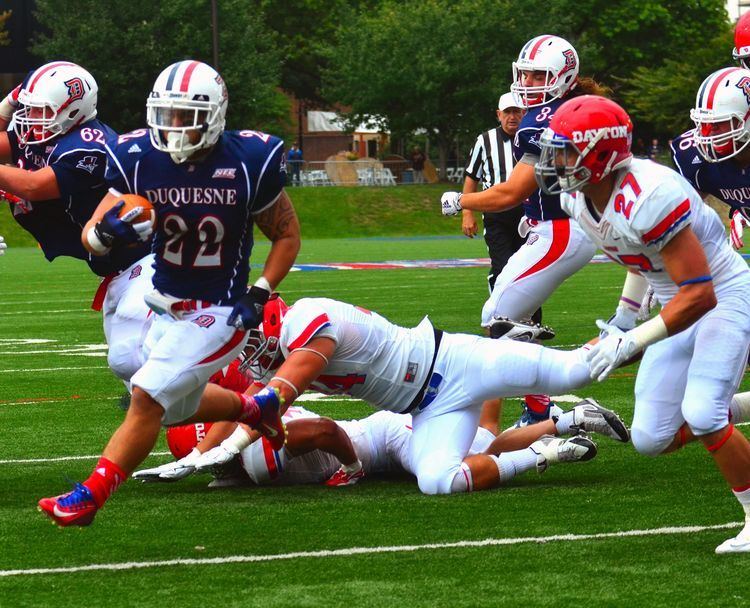
Duquesne was the ECAC Bowl champions and NCAA Division I FCS Mid-Major National Champions in 2003. The team was the 1995 ECAC Bowl Champions, as well. Duquesne was rated #1 in NCAA Division I by the Massey Ratings for the 1941 season and won a NCFA Club National Championship in 1973 after the program was revived in 1969 by then student-athlete Sam Costanzo in cooperation with university administration.
Major bowl games
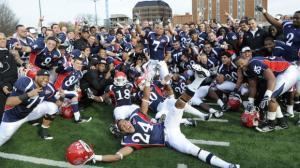
The Dukes had some success before NCAA college football's alignment into divisions. Duquesne won the 1934 Festival of Palms Bowl and 1937 Orange Bowl.
AP Poll appearances
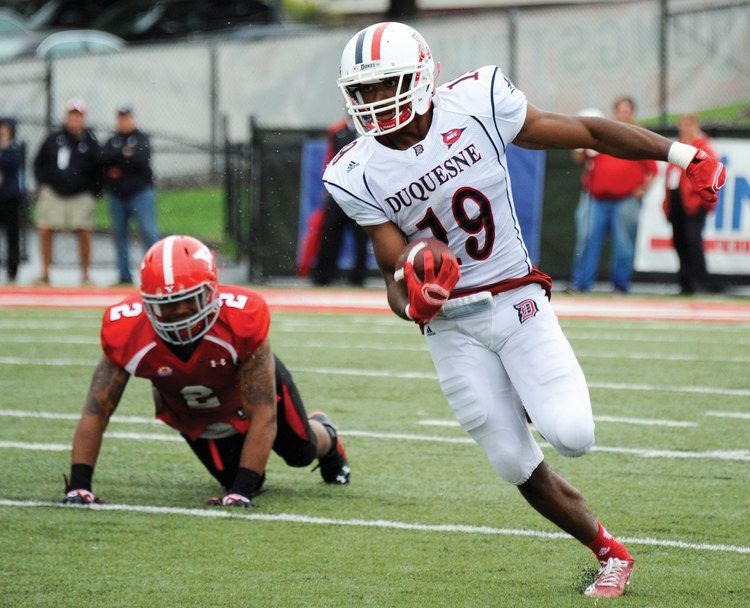
From 1933 to 1942, Duquesne was among the elite college football teams in the United States, garnering the sixth-highest winning percentage (71-22-2, .762) in the nation behind Alabama, Tennessee, Duke, Fordham and Notre Dame. In 1941, Duquesne finished the season undefeated and untied, earning a No. 8 Associated Press ranking while leading the nation in scoring defense, rushing defense and total defense. (Duquesne also led all of NCAA Division I football in scoring defense in 2002 and rushing defense, passing defense and total defense in 2005.)
Innovations
Duquesne is noted for establishing numerous firsts in collegiate football. Former head coach Elmer Layden is credited with devising the system of hand signals that officials use today. The signal system was put to use for the first time on November 11, 1928, when Duquesne hosted Thiel College at Pitt Stadium. Layden was also the first coach to use two sets of uniform jerseys for home and away contests. In 1929, graduate student manager John Holohan conceived the idea of Pittsburgh's first night game at Forbes Field. On the evening of November 1 that year, the Dukes made history by defeating Geneva College, 27-7, in front of more than 27,000 spectators. This led to the Duquesne Football team's nickname "the Night Riders."
At the club level, Duquesne won the 1973 National Club Football Association national championship at Three Rivers Stadium and was runner-up in 1977.
The Dukes football team also boasts the greatest all-time intraconference winning streak in NCAA Division I FCS history with 39 straight wins in the MAAC. The 39-game streak also ties for the second-longest intraconference winning streak in NCAA Division I Football history, five games shy of the all-time record.
The National Football League's Pittsburgh franchise has drafted more players out of Duquesne University than any other institution.
Notable former players
Notable alumni include:
Year-by-year results
Yellow = .500 record; Orange = above .500 record; Green = undefeated
1891-1892: Results Unavailable
